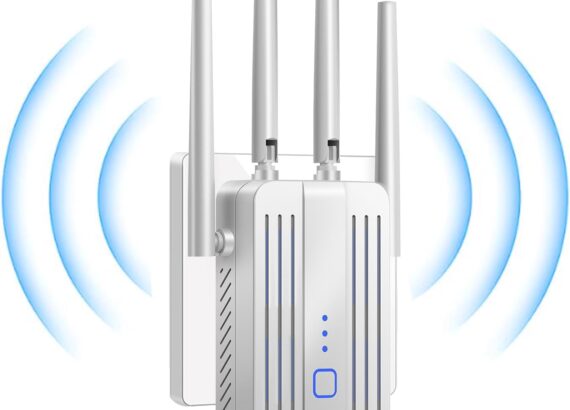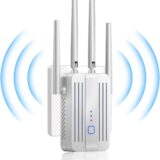In this blog post we’ll talk about How To Do SEO For Router And Accessories. In the digital age, where connectivity is paramount, the demand for routers and accessories has soared to unprecedented heights. Whether for homes, offices, or industrial applications, routers play a pivotal role in ensuring seamless communication and access to the online world. As a result, businesses operating in this sector are faced with the daunting task of not only providing top-notch products but also ensuring their visibility in the crowded online marketplace. This is where Search Engine Optimization (SEO) emerges as the guiding light, enabling these businesses to carve out their digital niche and thrive in an ever-expanding global market.
In this dynamic landscape, mastering SEO is no longer a choice; it is a necessity. This comprehensive guide delves into the intricacies of SEO tailored specifically for the router and accessories industry. By the time you’ve navigated through these insights, you’ll have the knowledge and tools needed to enhance your online presence, outshine the competition. Also reach your target audience effectively. Whether you’re an established player looking to fine-tune your SEO strategies or a newcomer seeking to establish a strong online foothold. This guide will empower you to unlock the full potential of your business in the world of routers and accessories.
Understanding the Router and Accessories Market
The router and accessories market is a dynamic and rapidly evolving sector within the technology and networking industry. As the demand for high-speed internet connectivity continues to grow, routers serve as the linchpin, facilitating seamless data transmission in homes, businesses, and industrial settings. Moreover, the ever-expanding Internet of Things (IoT) landscape further fuels the need for robust network infrastructure, making routers and their accompanying accessories indispensable.
In this competitive marketplace, a deep understanding of consumer needs and emerging trends is crucial. The market encompasses a wide range of products, including wireless routers, wired routers, modems, range extenders. Also various accessories like antennas, cables, and network security solutions. Identifying and catering to diverse customer preferences, from tech-savvy individuals seeking cutting-edge features to small business owners looking for reliable connectivity solutions, is essential.
With advancements such as the rollout of 5G technology and the proliferation of smart devices. The router and accessories market is poised for continued growth and innovation. Adapting to these changes and staying ahead in the digital race requires a comprehensive SEO strategy tailored to this dynamic market.
Content Marketing for Routers and Accessories
Content marketing plays a pivotal role in the success of businesses operating in the routers and accessories industry. It goes beyond product listings and sales pitches, aiming to educate, engage, and build trust with the target audience. In this highly technical field, where consumers often seek guidance and information, valuable content can make a significant impact.
To excel in content marketing, consider crafting informative blog posts, how-to guides, and in-depth tutorials on topics related to routers, network security, and accessories. Address common pain points and provide solutions. This not only establishes your brand as an industry authority but also improves SEO by generating relevant, shareable content.
Encouraging user-generated content, such as customer reviews and testimonials, can further boost credibility and offer authentic perspectives. Leveraging social media platforms for content distribution and community building is also essential. By creating content that resonates with your audience and fulfills their needs. You can strengthen your online presence and build lasting customer relationships.

Backlink Building
Backlink building, often referred to as link building, is a crucial component of SEO for the routers and accessories industry. Backlinks are essentially digital referrals from other websites to yours, signaling to search engines that your content is valuable and authoritative. Building a strong backlink profile not only enhances your website’s credibility but also improves its search engine ranking, resulting in increased visibility and organic traffic.
To excel in backlink building, it’s essential to focus on quality over quantity. Seek links from authoritative and relevant websites within your niche, such as technology blogs, networking forums, or review sites. Crafting exceptional, shareable content is key to attracting natural backlinks, as others are more likely to reference valuable resources.
Other strategies include guest posting on reputable websites, reaching out to industry influencers for collaborations, and participating in forums or communities relevant to routers and accessories. However, it’s crucial to steer clear of unethical practices like link farming or buying links, as these can harm your SEO efforts. Regularly monitoring your backlink profile and disavowing toxic links is also important for maintaining a healthy SEO strategy in this competitive market.
Social Media Integration
In the realm of routers and accessories, social media integration is a potent tool for bolstering your online presence, building brand awareness, and engaging with your target audience. It’s a dynamic means to connect with customers, showcase your products, and drive traffic to your website. Here’s how to harness the power of social media for SEO in this niche:
Select the social media platforms that match your target audience’s preferences. Platforms like Facebook, Twitter, and LinkedIn cater to a professional audience, while Instagram and Pinterest are visually-driven, ideal for showcasing product aesthetics.
Consistent Branding: Maintain a consistent brand identity across all your social profiles. Use your brand logo, colors, and a clear bio to establish trust and recognition.
Content Sharing: Regularly share high-quality content, including blog posts, product updates, and how-to guides. Engage your followers with informative and relevant content to position your brand as an industry expert.
Interaction: Respond promptly to comments and messages, fostering a sense of community. Motivate users to share their experiences and provide feedback.
Utilize industry-specific and trending hashtags to broaden your reach. Customized hashtags can also promote product campaigns.
Paid Advertising: Consider social media advertising campaigns to reach a wider audience and drive traffic to your site.
By seamlessly integrating social media into your SEO strategy, you can enhance your visibility, engage with potential customers, and ultimately drive more organic traffic to your website in the competitive router and accessories market.
E-Commerce SEO for Router Sales
In the competitive world of e-commerce, optimizing your website for router and accessories sales is essential for attracting potential customers, improving search engine rankings, and increasing revenue. Here’s a roadmap for E-Commerce SEO success in this niche:
Keyword Optimization: Thorough keyword research is vital. Use tools like Google Keyword Planner to identify high-value keywords such as router models, accessories, and related terms. Optimize product titles, descriptions, and meta tags with these keywords.
Product Structuring: Organize your products into logical categories and subcategories. Ensure a clear hierarchy that aids navigation and enhances the user experience.
Unique Product Descriptions: Write compelling and unique product descriptions that highlight the features, benefits, and specifications of routers and accessories. Avoid duplicate content.
Optimize Images: Use high-quality images and add descriptive alt text to make your products visually appealing and accessible.
Product Reviews: Encourage customer reviews and ratings to build trust and improve search engine rankings. Address negative feedback promptly.
Schema Markup: Implement structured data to enhance search results and attract potential customers through rich snippets.
Site Speed and Mobile Optimization: Ensure your website is fast and mobile-friendly for a seamless user experience, as page speed and mobile-friendliness are ranking factors.
Secure Checkout: Prioritize website security and encrypt transactions to protect customer information.
Product Feeds: Utilize product feeds to facilitate advertising on platforms like Google Shopping.
Technical SEO: Regularly audit your site for technical SEO issues, such as broken links, and address them promptly.
Content Marketing: Create informative blog posts, buying guides, and tutorials related to routers and accessories to attract organic traffic.
By implementing these strategies, your e-commerce store can enhance its visibility, credibility, and profitability in the competitive router and accessories market.
Analytics and Monitoring
Analytics and monitoring are the compass and GPS of your SEO journey in the router and accessories market. These critical tools not only track your performance but also provide insights for continuous improvement. Here’s how to effectively use them:
Google Analytics and Search Console: Set up and regularly review Google Analytics to track website traffic, user behavior, and conversion rates. Google Search Console is essential for monitoring your site’s presence in Google’s search results and identifying issues.
Key Performance Indicators (KPIs): Define and track KPIs, such as organic traffic, conversion rates, and bounce rates, to measure the effectiveness of your SEO efforts.
Rank Tracking: Keep an eye on your search engine rankings for targeted keywords using SEO tools like SEMrush or Moz. Monitor changes in ranking positions to adjust your strategies.
User Behavior Analysis: Analyze user interactions, including click-through rates and dwell time. This data can help you refine your content and on-page optimization.
Content Performance: Regularly assess the performance of blog posts and product descriptions. Determine the content responsible for the highest traffic and conversions.
Competitor Analysis: Use competitive analysis tools to compare your performance with competitors and discover areas where you can gain an edge.
Regular SEO Audits: Conduct periodic SEO audits to identify technical issues and ensure your website adheres to best practices.
Adaptation to Algorithm Changes: Stay informed about search engine algorithm updates and adapt your strategies accordingly to maintain or improve your rankings.
Conversion Tracking: Set up e-commerce tracking to monitor sales and revenue generated from your router and accessories e-commerce platform.
Incorporating analytics and monitoring into your SEO strategy allows you to make data-driven decisions, fine-tune your approach, and achieve sustainable success in the competitive router and accessories market.
Mobile SEO
Mobile SEO is an indispensable facet of optimizing your online presence in the router and accessories market. Given the proliferation of smartphones and the increasing reliance on mobile devices for online activities, catering to the mobile user experience is paramount. Here’s how to excel in Mobile SEO:
Mobile-Friendly Design: Ensure your website is responsive, adapting seamlessly to various screen sizes and orientations. Google prioritizes mobile-friendly sites, enhancing their visibility in search results.
Accelerated Mobile Pages (AMP): Implement AMP to improve page load speed on mobile devices. Faster load times enhance user experience and are a ranking factor.
Optimize for Voice Search: Mobile users often engage with voice search. Incorporate conversational and long-tail keywords in your content to align with voice search queries.
Local Mobile SEO: If you have physical stores, optimize for local search. Utilize location-based keywords and create Google My Business listings for each store.
Image Optimization: Compress and optimize images to reduce page load times on mobile devices without sacrificing visual quality.
Mobile-First Indexing: Google primarily uses your site’s mobile version for ranking and indexing. Make sure your desktop and mobile versions have consistent content.
App Integration: If you have a mobile app, integrate it seamlessly with your website, offering a smooth transition between the two platforms.
Test on Real Devices: Regularly test your website on various real mobile devices to identify and rectify user experience issues.
By prioritizing mobile SEO, you enhance your website’s usability, search engine rankings, and overall user satisfaction, which is crucial in the competitive router and accessories market, where customers often seek information on-the-go.

Adapting to Algorithm Updates
In the ever-evolving landscape of SEO for routers and accessories, staying nimble and adaptable is essential, particularly when search engines roll out algorithm updates. Algorithm changes, such as those by Google, can significantly impact your website’s ranking and visibility. Here’s how to effectively adapt to these updates:
Stay Informed: Keep a close watch on SEO news and updates from authoritative sources. Google often announces algorithm changes, giving you a head start in preparing for adjustments.
Regular SEO Audits: Conduct regular SEO audits to identify potential issues and areas for improvement. Address any technical, content, or backlink issues promptly.
Monitor Performance: Pay attention to your website’s performance immediately after an algorithm update. Monitor key metrics, like rankings, traffic, and conversion rates, to gauge the impact.
Content Quality: Focus on maintaining high-quality and relevant content. Updates often prioritize user-centric content, so align your content strategy accordingly.
Mobile Friendliness: Given the importance of mobile SEO, ensure your website remains mobile-friendly to meet the criteria of mobile algorithm updates.
User Experience: Continuously work on improving the user experience on your site. A positive user experience aligns well with algorithm updates that emphasize user satisfaction.
Quality Backlinks: Regularly assess your backlink profile to ensure it comprises quality, relevant links. Disavow any harmful or irrelevant links.
Adapt to New Features: If an update introduces new search features (e.g., featured snippets), optimize your content to leverage these opportunities.
Professional Help: Consider consulting with SEO experts who are well-versed in adapting to algorithm updates, especially when major changes occur.
Adapting to algorithm updates is a constant and necessary part of maintaining and improving your SEO strategy. Flexibility, vigilance, and a commitment to best practices will help you navigate these changes effectively in the competitive router and accessories market.
SEO Tools and Resources
In the router and accessories industry, harnessing the power of SEO tools and resources is pivotal for gaining a competitive edge. These indispensable resources assist in optimizing your website, tracking performance, and staying informed about industry trends. Here’s a compilation of key SEO tools and resources:
Keyword Research Tools: Tools like Google Keyword Planner, SEMrush, and Ahrefs help you identify relevant and high-traffic keywords to target in your content.
Analytics Tools: Google Analytics and Google Search Console offer valuable insights into website traffic, user behavior, and search performance.
Technical SEO Tools: Screaming Frog and Moz’s Site Crawl help uncover technical issues and offer suggestions for improvements.
Backlink Analysis Tools: Tools like Moz, Majestic, and Ahrefs help you assess and manage your backlink profile and track competitor backlinks.
Content Optimization Tools: Yoast SEO and Surfer SEO assist in optimizing on-page content for search engines and user experience.
Local SEO Tools: Google My Business and BrightLocal help in optimizing and managing local business listings.
SEO Blogs and Forums: Industry-specific blogs like Moz, Search Engine Land, and Webmaster World are great for staying updated on SEO trends and discussions.
Online Courses: Platforms like Coursera and Udemy offer SEO courses and certifications to enhance your knowledge and skills.
SEO Communities: Engage in communities like Reddit’s r/SEO and LinkedIn SEO groups to exchange ideas and seek advice from fellow professionals.
SEO Conferences: Attend industry conferences like SMX and MozCon to gain insights from experts and network with peers.
By leveraging these tools and resources, you can fine-tune your SEO strategy, stay ahead of the curve, and improve your online presence in the competitive router and accessories market.
Conclusion: How To Do SEO For Router And Accessories
In the fast-paced and competitive world of router and accessories sales, SEO stands as the linchpin to online success. This comprehensive guide has illuminated the path toward establishing a robust online presence, attracting your target audience. Also driving sustainable growth in a thriving marketplace. From keyword research and technical optimization to content marketing and mobile SEO. You’ve gained invaluable insights into the strategies that can propel your brand to new heights.
Remember, the SEO journey is ongoing. The digital landscape is ever-evolving, with search engine algorithms and consumer behaviors in constant flux. Adapting to change, continuously monitoring your performance, and staying informed are essential. As you implement the strategies outlined here, always prioritize your customers’ needs, ensuring a seamless, informative, and enjoyable experience. By doing so, you will not only conquer the challenges of the router and accessories industry but also emerge as a trusted and authoritative presence in the digital world. SEO isn’t just about rankings; it’s about enhancing the lives of your customers, and that is the key to your enduring success.







